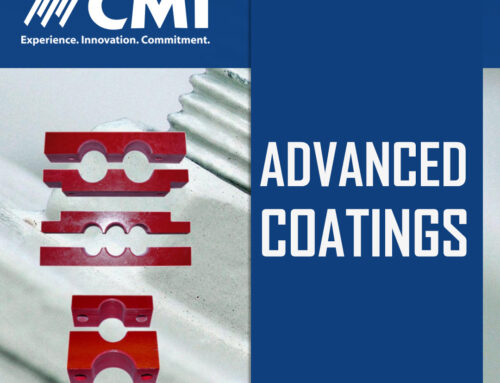Aerogels stand at the forefront of advanced materials, offering a glimpse into the future of thermal insulation technology. Comprised of a gel transformed into a porous solid, aerogels are renowned for their low thermal conductivity, making them some of the most effective insulators known to science. Their unique structure, mostly comprised of air, lends itself to a wide array of applications, from insulating spacecraft to enhancing energy efficiency in residential homes.

The manufacturing process of aerogels involves the careful extraction of liquid from the gel structure and replacing it with gas, without collapsing the intricate network of pores. This results in a material that is not only light but also strong for its weight. Despite the promise they hold, the widespread adoption of aerogels is not without its challenges. They can be fragile and often require specialized handling, and their synthesis can be both energy-intensive and costly. However, continuing advancements are aimed at overcoming these barriers, thus expanding the potential of aerogels in various industries.
Key Takeaways
- Aerogels are notable for their exceptional thermal insulation properties.
- They are both lightweight and strong, but can be delicate and expensive to produce.
- Ongoing advancements strive to address aerogel production challenges, enhancing their applicability.
Fundamentals of Aerogels

Aerogels hold a distinguished place in material science due to their exceptional characteristics and wide-ranging applications, especially in thermal insulation.
Composition and Structure
Aerogels are made from a gel in which the liquid component of the mixture has been replaced with a gas. They are composed primarily of silica, although other materials such as carbon, alumina, and polymers like resorcinol-formaldehyde can be used to create different types of aerogels. The structure is a highly porous and interconnected network that spans nanoscale dimensions, which contributes to their lightness and effectiveness as insulators.
Key Attributes of Aerogel Composition:
- Base material: Silica (most common), Alumina, Carbon, Polymers
- Porosity: High (up to 99.8%)
- Morphology: Nanostructured lattice
Physical Properties
Aerogels possess a low density, typically around 0.015 to 0.020 grams per cubic centimeter, which can be less than the density of air. This low density is a direct consequence of their high porosity. They also have a low thermal conductivity, often in the range of 0.012 to 0.020 W/m·K, which allows them to be superior insulators. The surface area of aerogels is vast, typically 500 to 1000 m²/g, which is beneficial for applications requiring high surface contact, such as in catalysis or adsorption processes.
Physical Characteristics of Aerogels:
- Density: Low
- Thermal Conductivity: Low (Excellent insulator)
- Surface Area: High
Understanding the composition and physical properties of aerogels provides insight into their versatility and efficiency in industrial and commercial applications, particularly in thermal insulation.
Manufacturing Processes

The Manufacturing Processes of aerogels predominantly involve the sol-gel technique for creating the gel framework and the supercritical drying method for extracting the liquid component while preserving the delicate structure of the aerogel.
Sol-Gel Technique
In the sol-gel technique, chemicals are mixed in a solution to form a wet gel. Silica aerogel production typically starts with a silicon precursor, such as tetramethoxysilane (TMOS) or tetraethoxysilane (TEOS). These precursors undergo hydrolysis and polymerization to form a silica network, composing the ‘sol’ phase. The process gradually transitions to the ‘gel’ phase as the silica particles link to form a three-dimensional structure.
- Key steps in Sol-Gel Technique:
- Mixing: Precursor, water, and catalyst are combined.
- Gelling: Solution transitions from liquid ‘sol’ to solid ‘gel’.
- Aging: The gel structure strengthens over time.
Supercritical Drying Method
The supercritical drying method removes the solvent from the gel without collapsing the structure. Once the silica gel is formed, it undergoes drying at conditions where the solvent reaches its critical point. At this juncture, the distinction between liquid and gas phases ceases to exist, allowing for the gentle removal of the solvent.
- Conditions for Supercritical Drying:
- Temperature: Must be above the critical temperature of the solvent.
- Pressure: Must be above the critical pressure of the solvent.
This method produces an aerogel with exceptional thermal insulating properties by maintaining structural integrity. The result is a lightweight, porous material capable of supporting multiple times its own weight. Supercritical CO2 is commonly used due to its moderate critical temperature and pressure conditions, which are suitable for preserving the delicate structure of the aerogel.
Applications of Aerogels

Aerogels are utilized in a wide array of industries due to their exceptional properties, such as low thermal conductivity and high surface area. These distinctive characteristics enable their use in numerous applications ranging from thermal insulation to environmental solutions.
Industrial Uses
Aerogels in industrial settings are prized for their thermal stability and mechanical properties. One significant application is in energy storage systems, where aerogels serve as fillers or carriers to improve performance. The high porosity and specific surface area of aerogels also make them ideal for adsorption processes.
- Composites: Aerogels are incorporated into composites to enhance structural stability without adding weight.
- Glass and Fibers: Aerogels are used with glass and fibers to create materials with ultra-low density and high porosity for better insulation.
Emerging Technologies
Emerging technologies leverage the unique properties of aerogels, exploring prospective uses that address 21st-century challenges. Biomedical engineering benefits particularly from aerogels’ high surface area and pore size, which are vital for applications such as drug delivery and biosensing.
- Catalysis: Due to their high surface area, aerogels act as catalysts or support for catalysts in chemical reactions.
- Biomedical Applications: Hybrid aerogels are being developed for tissue engineering, with a focus on biocompatibility and thermal insulation.
- Environmental Remedy: Aerogels are being researched for their ability to remediate environmental issues through selective adsorption of pollutants.
Challenges and Development

Aerogels stand as a pinnacle of thermal insulation technology, yet they face real-world application challenges, including material limitations and economic hurdles. The path forward involves targeted research and strategic routes to effective commercialization.
Material and Economic Considerations
Materially, aerogels vary from organic to inorganic types, with oxide aerogels, carbon aerogels, and ceramic aerogels showing particular promise due to their ultralow-density and insulative properties. While silica gel is common, oxide aerogels are often preferred for more extreme conditions due to their ability to withstand radiation and other environmental stresses. However, the use of rare materials, fibrous structures, and nanocrystals to enhance physical properties often leads to increased costs.
For organic aerogels, the presence of functional groups can dictate their performance in various applications, such as supercapacitors. In contrast, inorganic aerogels like those developed by Gurikov et al., which use colloidal precursors, showcase innovative approaches to structure and performance optimization.
The production of aerogels is expensive. Scaling up manufacturing processes to reduce costs without compromising the functional integrity of these materials is a central challenge. The expensive nature of high-quality aerogels limits their accessibility and hinders widespread commercialization.
- Cost-effective synthesis:
- Exploration of less expensive precursors
- Simplification of manufacturing processes
- Durability enhancement:
- Research to improve mechanical strength
- Integration with composites
Future Research and Commercialization
Future research directions are crucial in addressing the inherent fragility of aerogels and advancing their commercialization. Gurikov and other researchers have emphasized the need to evolve aerogel composition and synthesis techniques to develop robust, yet cost-effective aerogel variants that can be produced at scale.
- Application-specific design:
- Tailoring aerogels for supercapacitors and energy storage devices
- Customization for environmental clean-up and radiation-shielding needs
- Commercial scalability:
- Development of new methods for mass production
- Partnerships with industry leaders for market penetration
Researchers are also fine-tuning the internal colloidal and fibrous structures for better performance in demanding roles. The functional groups present in organic aerogels are a focal point for modifying their chemical behavior, while inorganic aerogels are being improved for better thermal and physical stability.
In commercialization efforts, the goal is to bring the costs down through innovative production methods, widening the potential for these materials to have a significant impact on various industries, from construction to aerospace. The evolution of ceramic aerogels and the integration of nanocrystals suggest an optimistic outlook for the future of aerogels in thermal insulation and beyond.
Frequently Asked Questions
Aerogels hold significant promise in the realm of thermal insulation, boasting unique properties that make them stand out. Here are some common inquiries regarding their use and the challenges faced.
What are the potential applications for aerogel in thermal insulation?
Aerogel’s exceptional thermal resistance makes it suitable for insulating buildings, pipelines, and even spacecraft. They can be used in extreme temperature scenarios where traditional materials fail.
Why hasn’t aerogel become more commonplace in insulation applications?
Aerogel’s brittle nature has limited its widespread adoption in the insulation industry, as it requires high production costs and is difficult to handle.
What advancements have been made in thermal insulation technology recently?
Research in optimizing aerogel composites has yielded more durable and flexible forms, and the development of new manufacturing techniques aims to reduce costs.
What are the disadvantages of using aerogel for insulation purposes?
Aside from cost, aerogels can be tricky to install, and their dustiness requires careful handling to avoid respiratory issues during the installation process.
How does aerogel insulation compare to traditional insulation materials in terms of efficiency?
Aerogels have a much lower thermal conductivity than most traditional insulation materials, meaning they offer superior insulation with a much thinner layer.
What are the barriers to the wider adoption of aerogel-based insulation solutions?
Main barriers include the high initial cost, the need for specialized equipment and training for proper installation, and a limited understanding of long-term performance across various applications.






